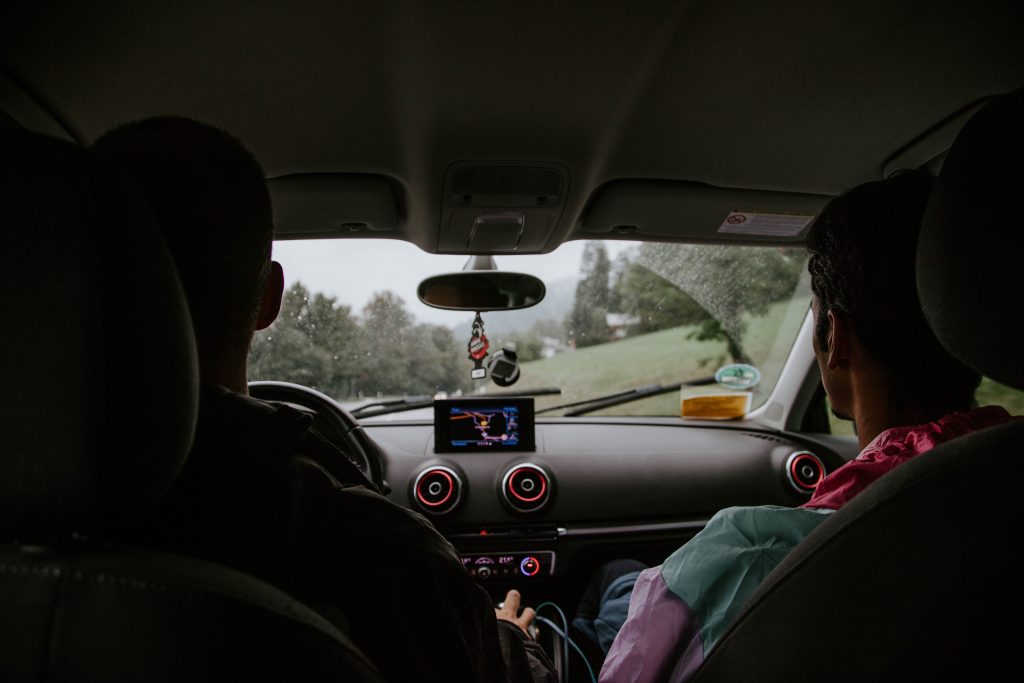In 1960 Bob Dylan carpooled from Minnesota to New York and in 1964 Jim Morrison from Florida to LA. Art Garfunkel sometimes rejected chartered plane flights and carpooled his way to gigs. Back then, people used the traditional thumb-out-on-the-side-of-the-road tactic but now, with Wi-Fi access and technology advancements, apps make it possible to share rides with the click of a button.
Owning a private car is a mark of the American Dream. It symbolizes independence, wealth, freedom and leisure but in recent years, sharing rides has made a comeback due to environmental concerns and desire for cheaper transport. Both carpooling and ridesharing are forms of collective transport but there is a slight difference. The former is an arrangement between people who have a similar commuting pattern and the passengers tend to only reimburse the driver for a portion of the cost of gas. The latter is a service with a paid driver that works for a company who seeks to make a profit.
Louise Stephen is a carpooling advocate who ditched her solo commutes after sitting “on the motorway one day, looking at all the other drivers sitting without passengers”. The 31-year-old tells The Guardian “how mind-numbingly bored I was. So I thought it would be good to start sharing the journey with someone else”. It turns out, Stephen’s mentality is shared by others and a 2018 survey conducted by Pew Research Center showed ridesharing services have more than doubled in the last few years.
Technology is playing a monumental role in ridesharing’s growth as it allows both driver and passenger to hold each other accountable. Saba Waheed, a research director at UCLA told CNN “There’s clearly something about having the technology there as the mediator that created this level of trust between riders and drivers.” Companies such as Sidecar and Lyft noticed the appetite for carpooling and launched their respective ridesharing options many years ago. Uber, the current industry leader, launched its ridesharing app UberPool in 2014 and estimates about 20 percent of all rides taken globally are through this service.

The most popular demographic for ridesharing is 18 to 29 which is largely due to this generation’s desire to help the environment by driving less. However, some critics say ridesharing adds to traffic problems as people increasingly migrate from public transit to carpooling as this service becomes widespread. Bruce Schaller, a former deputy commissioner for traffic and planning at the New York City Department of Transportation, says “shared rides add to traffic because most users switch from non-auto modes” . Lyft reject these claims and says carpooling is inherently more sustainable. Campbell Matthews, a spokeswoman for Lyft, highlights “since Lyft’s founding, we’ve been focused on increasing car occupancy and eliminating the need for car ownership.” Perhaps they’re sticking to their word, because in 2018 Lyft offered to pay people if they parked their cars for a month and use ridesharing instead.
To diversify options, many start-ups are catching on to the growing trend of sharing rides and launching rival apps to the big dogs. Stefanie Lemcke, founder of GoKid, which launched in 2015 in the United States, helps parents carpool with families they know and trust. Lemcke thinks this sentiment was always there and is especially necessary in America “as public transportation outside a few of the large cities was really not serving families”.
Evidence shows the current coronavirus pandemic could be the push carpooling needs to cement its bright future. Although companies like Lyft and Uber have temporarily suspended their ridesharing options over safety concerns of riding with strangers, the traditional community-based carpooling methods are making a comeback. Stew Langille, founder and CEO of Float Mobility, tells Quartz their “Carpool with a Friend” option has seen more than a 400 percent increase in the last few months. He says this is because people are more likely to trust those they know, such as friends and neighbours, to adhere to Covid-19 regulations and to stay home if they’re sick. Jessica Justman, a senior technical director at ICAP and associate professor of medicine in epidemiology at Columbia University’s Mailman School of Public Health, says this makes sense because every transport decision people make involves some form of risk assessment. Uncertain times such as the current pandemic tend to exacerbate these safety-assessing tendencies and would explain why people opt for carpooling instead of public transport.
A potential hurdle for the increasing success of sharing rides is convincing enough people about the benefits of carpooling whilst making sure the desires of both drivers and passengers are mutually served.




Pingback: 7 Things Locals Need to Know About Getting Around San Francisco – Float Blog